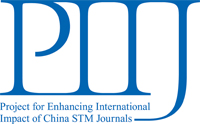Objective: To study the pulse diagram parameters of subjects with subhealth state and to find the pulse parameters for subhealth state evaluation. .
Conclusion: A total of 1 275 subjects without diagnosed diseases were recruited and their health conditions were assessed with Health Evaluating Questionnaire H20 V2009. The subjects were assigned to health group or subhealth group according to the scale score. Subjects’ syndrome in the subhealth group was differentiated using score of “subhealth state of syndrome differentiation V2010”. Another 121 patients with cardiovascular diseases were enrolled as a control. The pulse information was collected with YJJ-101 subhealth pulse monitoring system and the parameters include amplitude of main wave (h1), amplitude of repeat wave (h5) and its front wave (h3), 1/3 or 1/5 width of main wave (w1) or (w2), time of rapid ejection phase (t2), period of pulse (t), pulse pressure (Pp), square (S), area in systole (As) and area in diastole (Ad) of pulse diagram and ratios of h3/h1, h5/h1, w1/t, w2/t and h1/t1.
Results: Pulse diagram analysis showed significant differences among health, subhealth and disease group in Pp, h1, S and As and ratios of h5/h1 and w2/t. Compared with the health group, the values of w1/t and w2/t of the subhealth group increased (P<0.05), and Pp, h1, h5, h5/h1, S, As and Ad decreased (P<0.05). Compared with health group, the parameters of pulse of the subhealth group were increased in Pp and h5/h1 (P<0.05) and decreased in h1, w2/t, S and As (P<0.05). Compared with health group, pulse parameters h3/h1, w1, w1/t, w2/t of excess and deficiency syndrome group increased, and h1, h5, h1/t1 and h5/h1 decreased. Among different syndromes of subhealth state, pulse diagram parameters h1, h5, h3/h1, h5/h1 and w1/t of yin deficiency, qi deficiency, liver stagnation and excess heat group were significantly different (P<0.05) from the health group, for example, pulse parameters h1 and h5 of stagnation, yin deficiency, qi deficiency and excess heat group declined in order, and pulse parameters h3/h1 and w1/t of liver stagnation, excess heat, yin deficiency and qi deficiency group increased in order. Pulse index h1 in the kidney deficiency group was higher than that in the health group and the other syndrome groups.
Conclusion: Results of analyzing sphygmogram parameters showed different characteristics among different health status and the subhealth state due to different syndromes. Sphygmogram parameters may be used for objective evaluation of health status or subhealth syndrome differentiation.
 Table of Content
Table of Content














